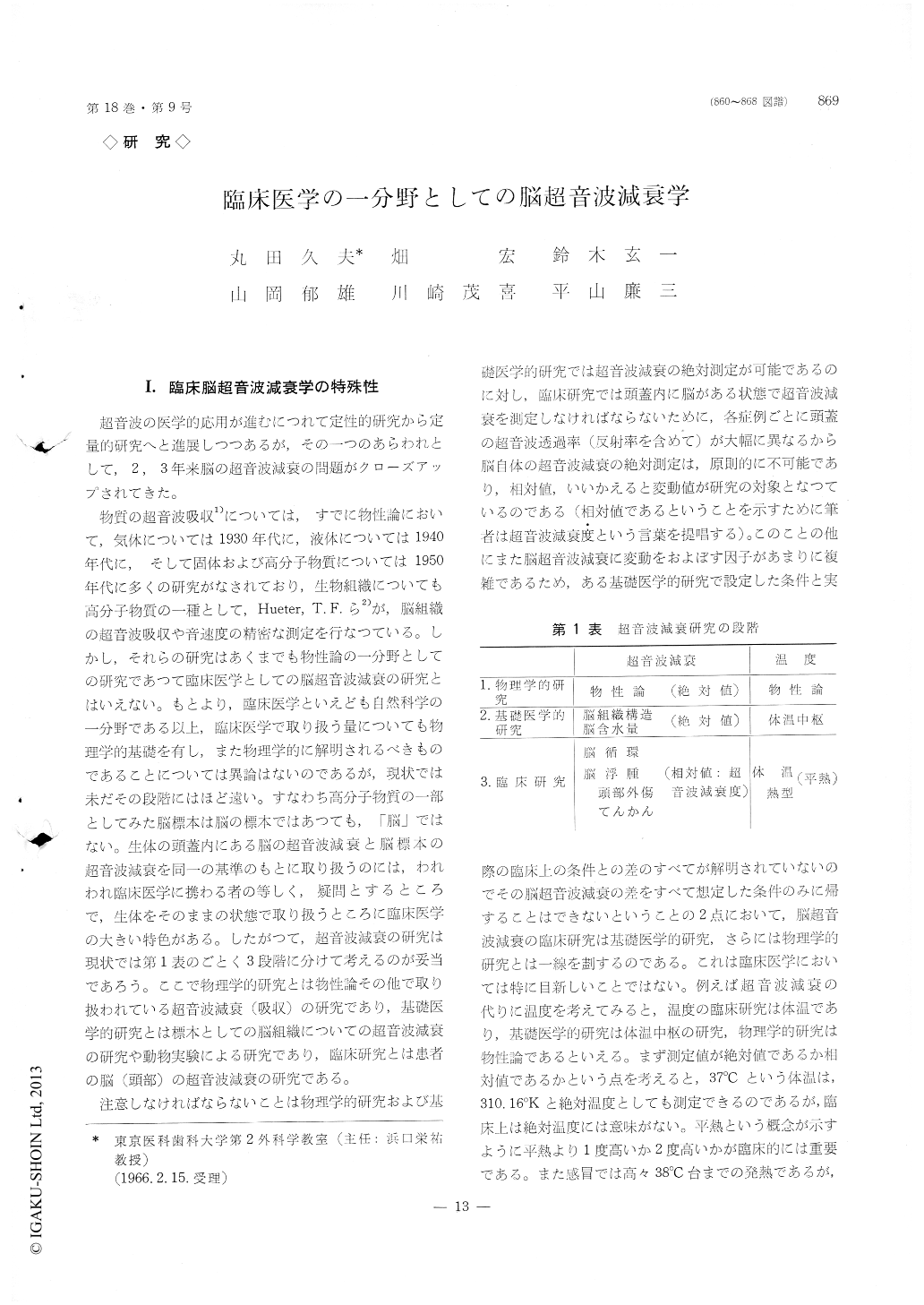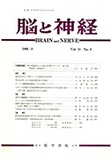Japanese
English
- 有料閲覧
- Abstract 文献概要
- 1ページ目 Look Inside
I.臨床脳超音波減衰学の特殊性
超音波の医学的応用が進むにつれて定性的研究から定量的研究へと進展しつつあるが,その一つのあらわれとして,2,3年来脳の超音波減衰の問題がクローズアップされてきた。
物質の超音波吸収1)については,すでに物性論におして,気体については1930年代に,液体については1940年代に,そして固体および高分子物質については1950年代に多くの研究がなされており,生物組織についても高分子物質の一種として,Hueter, T.F.ら2)が,脳組織の超音波吸収や音速度の精密な測定を行なつている。しかし,それらの研究はあくまでも物性論の一分野としての研究であつて臨床医学としての脳超音波減衰の研究とはいえない。もとより,臨床医学といえども自然科学の一分野である以上,臨床医学で取り扱う量についても物理学的基礎を有し,また物理学的に解明されるべきものであることについては異論はないのであるが,現状でに未だその段階にはほど遠い。すなわち高分子物質の一部としてみた脳標本は脳の標本ではあつても,「脳」ではない。生体の頭蓋内にある脳の超音波減衰と脳標本の超音波減衰を同一の基準のもとに取り扱うのには,われわれ臨床医学に携わる者の等しく,疑問とするとここで,生体をそのままの状態で取り扱うところに臨床医学の大きい特色がある。したがつて,超音波減衰の研究に現状では第1表のごとく3段階に分けて考えるのが妥当であろう。ここで物理学的研究とは物性論その他で取り扱われている超音波減衰(吸収)の研究であり,基礎医学的研究とは標本としての脳組織についての超音波減衰の研究や動物実験による研究であり,臨床研究とは患者の脳(頭部)の超音波滅衰の研究である。
Investigations have been made of the ultrasonic absorption through the lifeless materials for approxi-mately ten years.
Since nineteen-fifties the brain, as one of poly-merized materials, has become the object of ultrasonic measurment.
The brain may not be so different, as one of phy-sical substance, either in vivo or in vitro. Clinically, however, this material has many complicated aspects. Here lies the particularity of the study about ultra-sonic attenuation as a field of clinical medicine.
For the clinical application of the ultrasonic atte-nuation, we find it technically convenient to measure the relative value, i. e. the momentary fluctuation of the ultrasonic attenuation through the objective ma-terials in various clinical conditions.
We experimentally proved that the changes in the ultrasonic attenuation through the brain momentarily reflects the changes in cerebral circulation.
Two clinical conditions, tilting and carbon dioxide loading, which are known to give cerebral blood flow changes and which show reflecting changes in ultra-sonic attenuation through the brain, are discussed.

Copyright © 1966, Igaku-Shoin Ltd. All rights reserved.


